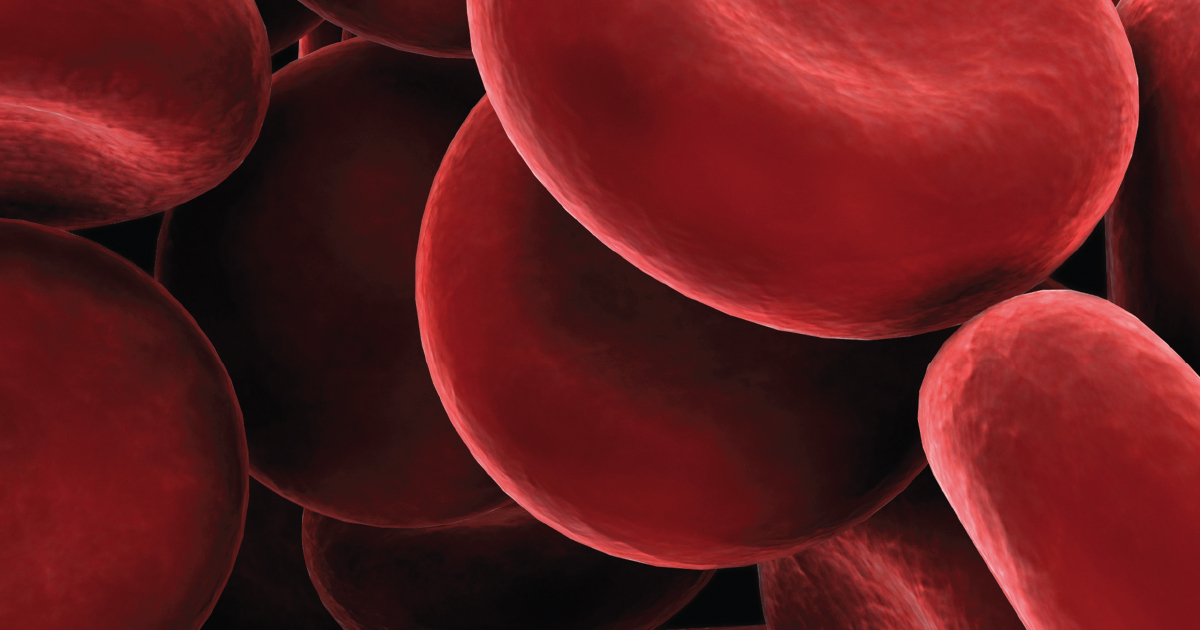Symptoms Of Aplastic Anemia
Aplastic anemia is a rare illness involving an insufficient number of blood cells of all types. Blood has three types of cells: red blood cells, white blood cells, and platelets. The body makes these cells using hematopoietic stem cells, which are found in the bone marrow. In aplastic anemia, hematopoietic stem cells are damaged and cannot be used to form healthy blood cells. Aplastic anemia can have many causes, including genetics, autoimmune disease, and exposure to toxic substances. Unfortunately, however, the cause is unidentified in many cases. Although it is rare, anyone can get aplastic anemia. It is crucial to be aware of the symptoms of this condition so treatment can begin promptly. Start reading to learn about some of the most common signs now.
Easy Bruising And Bleeding

Easy bruising and bleeding is a common symptom of aplastic anemia. Normally, healthy individuals might bruise after running into things or receiving a blow to the skin. However, aplastic anemia patients may bruise from minor impacts or even possibly from no impact at all. They may also experience spontaneous bleeding under the skin. Red spots underneath the skin's surface can be indicative of internal bleeding caused by aplastic anemia. The easy bruising and bleeding associated with aplastic anemia are due to the lack of platelets. Without enough platelets, blood cannot clot properly. This symptom is characteristic of aplastic anemia but does not occur in anemia that involves only a lack of red blood cells.
Continue to reveal the next hallmark symptom of aplastic anemia.
Frequent Infections

Aplastic anemia involves a loss of white blood cells. Without its usual army, the body has a difficult time fighting off viruses, bacteria, and fungi. Therefore, patients with aplastic anemia tend to suffer from infections much more frequently than the average individual. Even if they do not have a virus, they may experience flu symptoms. Anyone who has recurrent infections should talk to a doctor about their symptoms. Although aplastic anemia is an unlikely cause, it is a possibility, as anyone can get aplastic anemia. Besides, frequent infections are concerning regardless and can be caused by other, more common illnesses. Diabetes, for example, can lead to recurrent infections.
Continue reading to understand the next symptom of aplastic anemia fully.
Dizziness

Feeling dizzy is a common symptom of anemia in general, and aplastic anemia is no exception. In typical anemia, this results from a lack of red blood cells to carry oxygen throughout the body. Since aplastic anemia also involves a lack of red blood cells, it has some symptoms in common with typical anemia. However, aplastic anemia tends to be more serious and may manifest in more severe symptoms, such as severe dizziness and fainting, often attributed to the other missing blood cells in addition to red blood cells. Patients may also feel simply lightheaded if their aplastic anemia is not severe. Frequently feeling lightheaded or dizzy can interfere with everyday activities and should always be checked out by a doctor.
Continue reading to learn about the symptom to watch for regarding the heart.
Irregular Heartbeat

Patients with aplastic anemia often have an irregular heartbeat or heart palpitations because a lack of red blood cells can prompt the heart to work harder to pump oxygen throughout the body. Basically, the heart is overcompensating for the lack of blood cells, which is very bad for the health of the heart because it can become overworked and strained. An abnormal heartbeat is a severe symptom because it can lead to more heart abnormalities and eventually heart failure. Any unusual heart-related symptoms, including irregular heartbeat, heart palpitations, and a fast heart rate, need to be checked by a doctor right away.
Keep reading for a related pair of symptoms of aplastic anemia.
Fatigue And Shortness Of Breath

Fatigue is a prevalent symptom of aplastic anemia as well as other types of anemia. Someone with aplastic anemia may feel more fatigued or short of breath than normal during or after exercise or from doing simple everyday activities. A healthy individual typically would not get winded doing chores, running errands or walking up a flight of stairs. However, someone with aplastic anemia will often feel fatigued or short of breath after these activities because they do not have the proper amount of blood cells to transport oxygen and nutrients throughout the body. Though these may seem like minor symptoms, fatigue and shortness of breath can negatively affect aplastic anemia patients’ quality of life. Someone with these symptoms should go to the doctor to figure out what might be going on.
Uncover more signs of aplastic anemia now.
Prolonged Bleeding

Individuals affected by aplastic anemia commonly experience the symptom of prolonged bleeding due to the effects of their blood and bone marrow condition. When healthy individuals experience bleeding inside or outside of the body, the coagulation cascade is triggered. The coagulation cascade is a combination of processes involving specialized proteins and platelets in the blood that form a blood clot to stop bleeding. Aplastic anemia patients have bone marrow that does not produce new blood cells as quickly as old blood cells are dying off. These blood cells include the red blood cells that carry oxygen, the white blood cells of the immune system, and platelets. The main component of blood vital for the coagulation cascade are platelets. Platelets are tiny blood cells that stick together to form a blood clot. A blood clot is unable to develop if there are not enough platelets present in an individual's blood. The bone marrow is responsible for the production of platelets. Individuals with aplastic anemia have platelets that die at the end of their life cycle and are not adequately replaced. This malfunction causes the patient to experience prolonged bleeding when a blood vessel becomes injured due to the body's inability to form blood clots properly.
Read more about the symptoms of aplastic anemia now.
Pale Skin

Pale skin is a symptom that can be indicative of an individual affected by aplastic anemia. Healthy individuals have bone marrow that produces an adequate amount of blood cells, including red blood cells. Red blood cells contain a compound called hemoglobin, which is responsible for the transport of oxygen in blood circulation to all of the different tissues throughout the body. Red blood cells are pumped through the heart and into the lungs where they pick up oxygen, where they are then pumped back to the heart and through the aorta. From the aorta, the oxygenated red blood cells deliver the oxygen to the tissues around the body. Aplastic anemia patients do not have an adequate number of red blood cells to transport oxygen because their bone marrow does not produce them to replace the red blood cells that die at the end of their lifecycle. This malfunction means there is a less overall oxygen concentration in the blood circulating the body. Oxygenated blood is bright red, where oxygen-poor blood is dark red. When light shines through an individual's skin, it reflects off of the two shades of red differently. This mechanism is what produces the fleshy pink hue of a healthy individual's skin, and the grey, pale hue of an aplastic anemia patient's skin.
Keep reading to uncover more details on the indicators of aplastic anemia now.
Bleeding Gums And Nosebleeds

Individuals affected by aplastic anemia can experience bleeding gums and nosebleeds as a symptom of their blood and bone marrow condition. The inside of an individual's mouth and nose are a type of tissue called mucous membranes. This type of tissue lines many canals and cavities that lead to the outside of the body. The mucous membranes that line the oral and nasal cavities are especially delicate when it comes to injury and irritation. Aplastic anemia patients do not have enough platelets in their blood to form blood clots properly when any internal or external tissue sustains injury and starts bleeding. Because the gums inside of the mouth are subject to the repeated abrasion of teeth brushing, they can tear and become irritated easily when an individual brushes too hard. However, someone with aplastic anemia will experience persistent bleeding of the gums with even regular brushing because their blood is unable to clot. Nosebleeds can be common in healthy individuals because the nasal membranes crack and bleed under dry conditions. However, aplastic anemia patients who experience dryness in the nose will have nosebleeds more frequently that last longer because their blood cannot clot the way a healthy individual's blood does.
Get more information about aplastic anemia warning signs now.
Skin Rash

Skin rash can occur in individuals who have any variation of anemia, but aplastic anemia is one of the most prevalent variations that cause an anemia rash. An anemia rash is a form of bruising that takes the appearance of a skin rash. The rash looks like patches of purple or red spots about the size of a pinpoint. The patches may be raised to the touch or flat and non-palpable. The most common location for an anemia rash to occur on a patient's body is the legs, arms, and neck. The anemia rash does not cause the patient to experience any symptoms like itchiness or pain. This type of rash is referred to as a petechial rash or petechiae. The red or purple spots are the result of the leakage of blood from tiny blood vessels in the skin. This leakage occurs in individuals with blood that cannot form clots properly. Because there is a general shortage of platelets in the blood of aplastic anemia patients, an anemia rash is a common occurrence. A petechial anemia rash can easily be distinguished from an actual epidermal irritation of the skin by pressing down on it. Petechial rashes do not blanch or turn white when pressure is placed on them.
Continue for more on aplastic anemia symptoms now.
Headaches

A common symptom seen in individuals with aplastic anemia is frequent headaches. Several mechanisms can cause a patient to develop a headache, including reduced levels of oxygen in the brain. Headaches are common in several types of anemia, but for different reasons. Aplastic anemia is caused by bone marrow that does not produce new blood cells as the old blood cells are dying at the end of their life cycle. The result is a shortage of red blood cells responsible for the delivery of oxygen and other nutrients to the different tissues around the body. A lower number of red blood cells causes lower levels of oxygen concentration in the individual's blood. The brain is a complex organ that requires adequate amounts of oxygen to work correctly. Just like other cells around the body, brain cells need oxygen to metabolize glucose into ATP or usable cellular energy. Without this cellular energy, the brain evokes responses to help increase oxygen levels in the brain. One of these responses is by the constant movement of muscles. The muscles in the neck and shoulders are responsible for supporting the head. Reduced oxygen concentrations can deprive these muscles of oxygen, resulting in neck stiffness that contributes to the development of a headache.